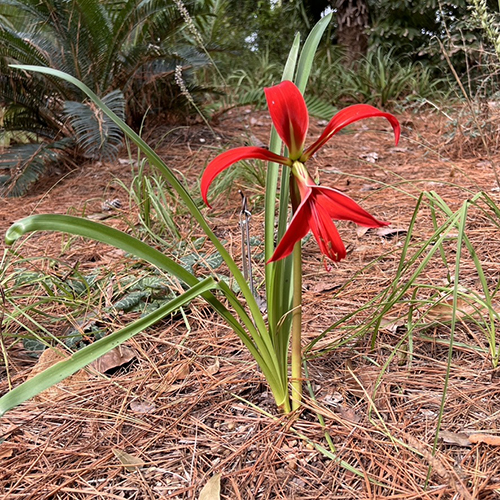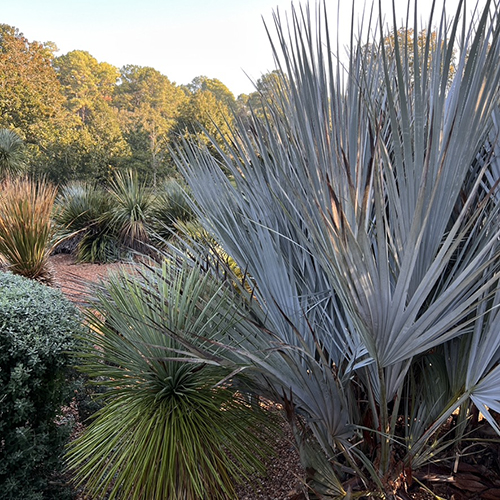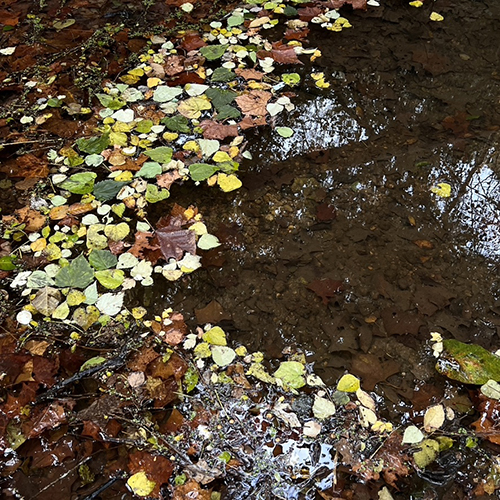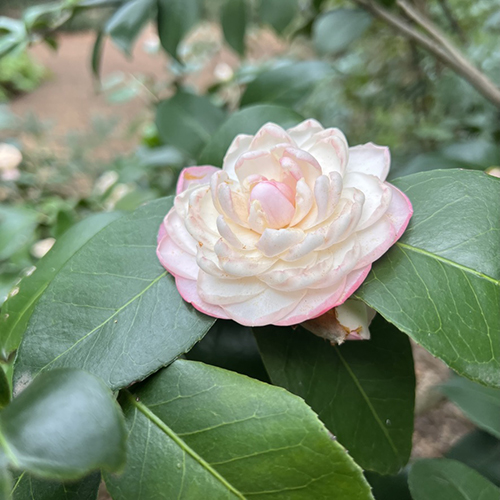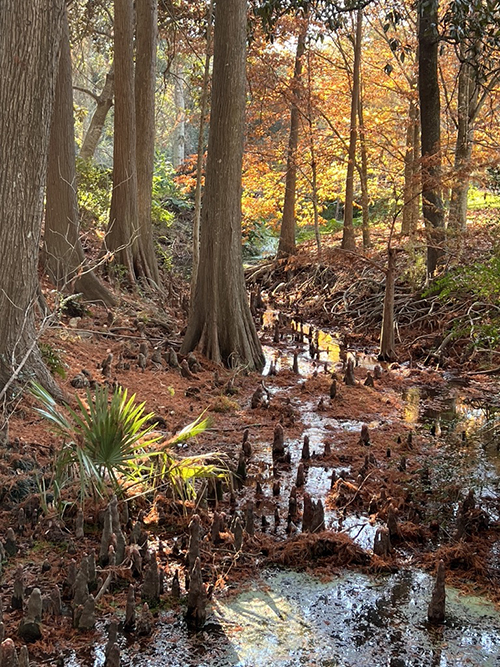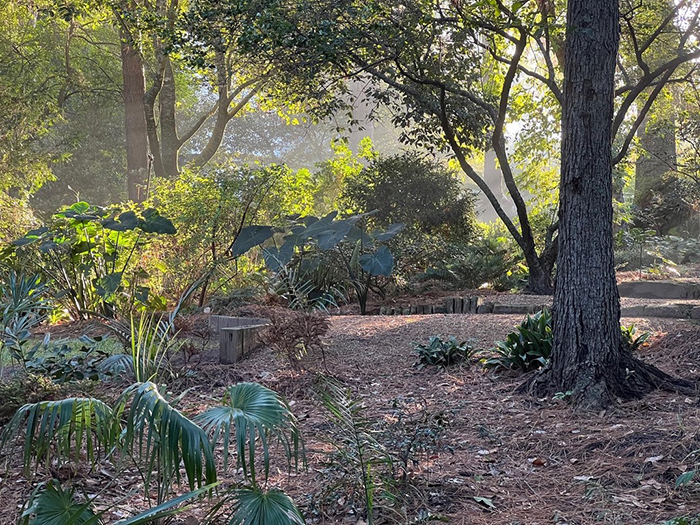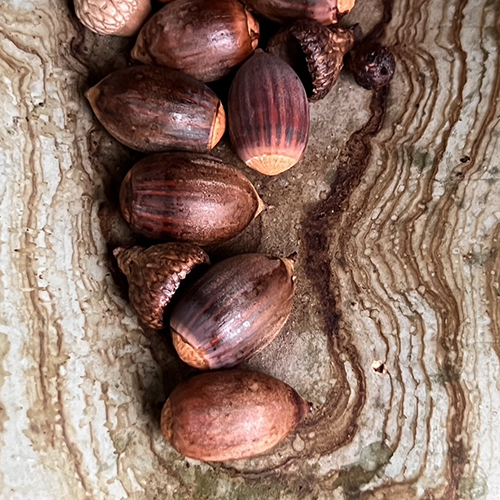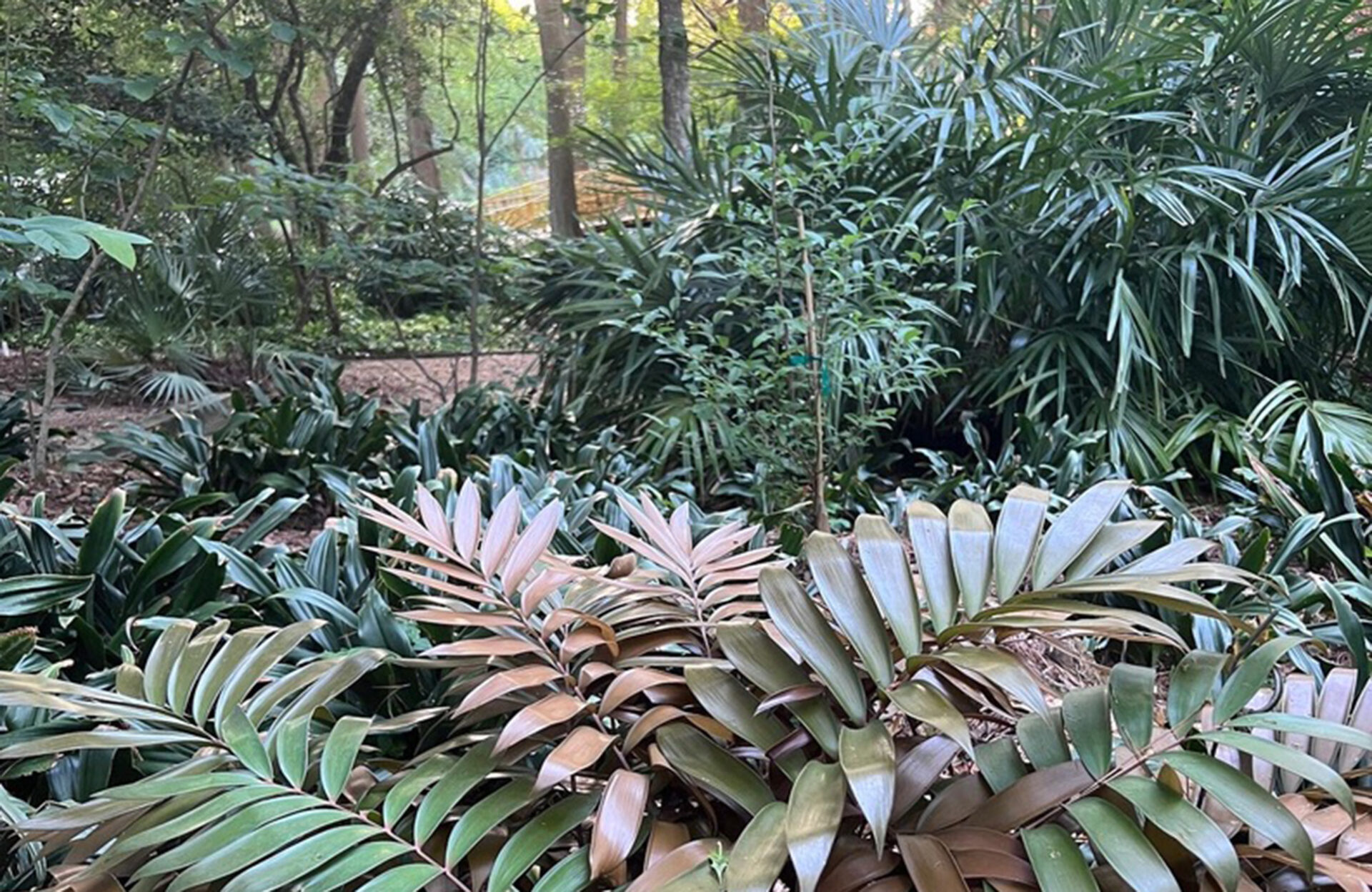John Fairey believed that silver and blue-green colors have a cooling effect as the plants shimmer in the wind. This is certainly true of many palms in the garden. Set high atop the Rain Lily Berm, the Sabal uresana probably have the most dramatic effect on visitors as they glimpse the deeply shadowed silvery blue-green leaves and hear the rustling of the fibrous leaves in the wind. The sound has been likened to the dull burbling and rippling of water in a stream. These palms didn’t escape our winter freeze totally unscathed but they are rebounding nicely. Set throughout the Garden, our Brahea moorei palms, collected in the montane forests of eastern Mexico, display dramatic golden inflorescences and leaves with silver underside. As visitors walk the winding paths through pine and oak, camellia and mahonia, evergreen palms with a tropical flair wave their silvery blue leaves. The Brahea moorei palms, likewise, were affected by the extreme low temperatures of this winter’s storm but they are slowly making a comeback.
The spiny dark evergreen leaves of Asian mahonias add texture to the woodland garden, while the tall leggy trunks and branches add form. Bright yellow flowers on spiraling racemes in winter, followed by dark bluish-black berries in mid-summer, attract pollinators and birds. But one of the true gems of the garden is a Mexican mahonia that John Fairey so fondly called the curly leaf chochoco because its small glossy bright green leaves have undulating leaf margins that provide quite a spectacle as they flutter in the wind. Whether allowed to grow as a rounded shrub or trained on an espalier, its yellow winter blooms provide dramatic winter color similar to its Asian counterparts.
